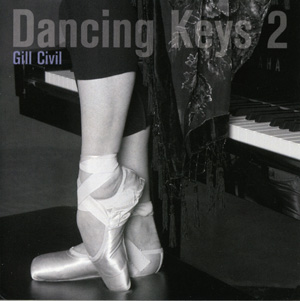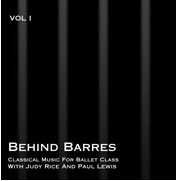
by Sharon Wehner
As a professional ballet dancer, I often get questions from non-dancers about what a work day/week/month looks like. This is usually followed by a look of surprise when I say that I dance 6-9 hours a day, 5-6 days per week, an average of 45 weeks a year. b35 of those weeks are as a member of the Colorado Ballet. The others involve guesting and contract work. The 8 weeks of “off-time” are scattered throughout the year, and spent taking class and cross-training.
So what does a typical day look like? That all depends on the week. During my season with Colorado Ballet, there are two basic time periods: Rehearsal and Performance. Rehearsal weeks consist of a 4-6 week period of learning and rehearsing repertory. Performance weeks involve both rehearsals and performances, including stage, tech, and dress rehearsals in the theatre, as well as “maintenance” rehearsals at the studio.
Rehearsal Period
During a rehearsal week, we begin every day with an hour and 15 minute Company Class. As a dancer who also teaches, I’m always amazed at how much the ballet mistress/master can squeeze into 75 minutes with 50 dancers in the room! Barre is usually only about 30 minutes, but we still get in every necessary component: plies, several tendus and dégagé combinations, ronde de jambe, fondue, frappe, adagio, and grande battement. Center combinations vary depending on the teachers, but we alway do a center tendu, adagio, pirouettes, small jumps, assemble, petit allegro, sisones, grande allegro, and sometimes a coda combination. One teacher manages to squeeze in additional center fondues, grande battement, and an assemble jump combination.
As one can see, company class has to run like a super efficient well-oiled machine. There is little time for corrections or individual attention. But even some of that does happen. Professionals are expected to pick up combinations quickly, transition from one group to the next seamlessly, and apply corrections without interrupting the flow of class. There is also an etiquette amongst professionals which enables the class to churn along. Every company has their own unique unspoken rules about barre space, mirror space, groupings, and “territory”. I always smile when I see the new “kids” trying to navigate these rules when they first enter the company. Luckily, most dancers are fairly intuitive, and masters at reading body language. Ideally, the less-than-aware dancers are taken aside and given a little guidance. But, I have also witnessed a senior principle chew out a young oblivious pup, and it can be quite the spectacle.
Class is followed by a fifteen minute break. Three hours of rehearsal follow this, then a one hour lunch break, and another three hours of rehearsals. Depending on the person and the productions being rehearsed, a dancer may only have one hour of rehearsal, but could just as easily have six hours. Generally, we rehearse more than one ballet at a time. We may be preparing the most immediate production (Swan Lake, for example), as well as learning repertory for later in the season, and working on the creation of new choreography for another season, all at the same time. As we get closer to production week, rehearsals are increasingly distilled down to focus only on the most immediate production.
Performance Period
Tech week involves a mix of technical, orchestra, and dress rehearsals twice a day in the theatre leading up to Opening Night. Our company usually performs a student matinee the morning before opening night. In the past few years, this performance has been live-cast locally and internationally to schools in ten different countries. Thus, even though it is technically considered a dress rehearsal, the student matinee is actually treated like a live show. Dancers and orchestra are expected to carry on in the face of mistakes and mis-cues.
The following weeks consist of a mix of rehearsals at the studio during the day and performances in the evening. During a performance day, our rehearsal time is limited to three hours, with a minimum of two hour break before being called to the theatre. We always have formal class before rehearsal, and then are responsible for warming ourselves back up at the theatre before the show.
After a run of performances, we return to a rehearsal period schedule, and the cycle starts all over again. Sometimes there will be a week or two layoff in between. This is usually a welcome recovery time for both the body and the mind (not so much the bank account, but that’s another story).
Off Season
Once the season winds down, usually in April for my company, we enter into a four month lay-off period. This time is utilized differently amongst various dancers. Many, like myself, pick-up contract “gigs” either performing or teaching, which often requires being free to travel. For example, I have been to Japan about 10 times, working with choreographers and performing as a guest artist. I have also worked with various pick-up companies. This involves a pretty serious commitment of daily rehearsals and performances, much like the work I do during the season with Colorado Ballet. I have also utilized the time to take college courses. Other dancers prefer to pick up non-dancing work, such as waiting tables or nanny-ing. It’s always a tricky thing—balancing rest and work and play during a lay-off. By the end of the rigorous season, the body and spirit are usually craving time on the beach eating copious amounts of ice cream. Sometimes this is possible, but not usually my style. The closest thing was last spring, when, after a very difficult year personally and professionally, I did a yoga teacher-training in Costa Rica. Even though the schedule was packed—a 200 hour training in 21 days—being immersed in nature and learning a new skill steeped in wisdom teachings, was extremely nourishing for me.
In terms of staying in shape and cross-training, this also looks differently for every dancer. Some dancers thrive on doing “normal-people” stuff—hiking, swimming, going to the gym. I admit, I love a great non-dance cardio workout with a set of headphones and a good pod cast. At the same time, I strongly believe that there is nothing like doing ballet class if you really want to be in dancer-shape. Yet, age and experience has also taught me that most bodies need some form of constructive rest, in which more body-friendly exercise is necessary. Yoga, pilates, and Gyrotonics are my go-to sources of conditioning in this arena. And then, every once in a while, I let myself totally veg out on the beach with a good book and an iced latte.
So, that’s it in a nutshell—the various faces of being a professional ballerina in a mid-sized company with a 35-week season. At least, in my world…
What’s coming up for Colorado Ballet? Keep track of their performance schedule here.

Contributing writer Sharon Wehner is originally from San Jose, California. She trained with Jody White and David Roxander, San Jose Dance Theatre, San Francisco Ballet and San Jose/Cleveland Ballet. Ms. Wehner joined Colorado Ballet in 1995 and was promoted to Principal in 1999, and in the last 20 years, has performed many lead roles with the Company. These include Kitri in Don Quixote, Giselle in Giselle, Odette/Odile in Swan Lake, Medora in Le Corsaire, Aurora in The Sleeping Beauty, Swanilda in Coppelia, Mina in Dracula, Juliet in Romeo & Juliet, the Cowgirl in Rodeo, the Sugarplum Fairy in The Nutcracker, Cinderella in Cinderella, Esmerelda in The Hunchback of Notre Dame, Titania and Helena in A Midsummer Night’s Dream, Second Violin in Balanchine’s Concerto Barocco, the Principal couple in Balanchine’s Stars and Stripes, Rubies, and Theme and Variations, Antony Tudor’s Leaves are Fading, and Twyla Tharp’s In The Upper Room. She has been honored to have solos and pas de deuxs created on her by choreographers Val Caniparoli, Edwaard Liang, Mathew Neenan, Christopher Wheeldon, Darrel Grand Moultrie, Dwight Rhoden, Jessica Lang, Brian Reeder and Toru Shimazaki.
In addition to Colorado Ballet, Ms. Wehner has also performed with The Washington Ballet, Oakland Ballet and Amy Seiwert’s Imagery. She has also been a guest artist at the Vail International Dance Festival, in Japan in the Aoyama Ballet Festival, and the National Ballet of Japan’s Golden Ballet Co-star. Sharon enjoys teaching dance to all ages and abilities, particularly Dance for Parkinson’s Disease.









